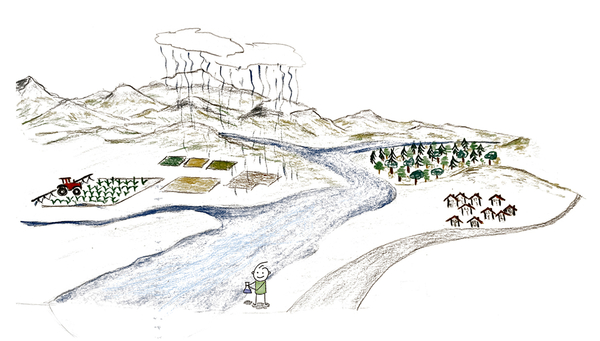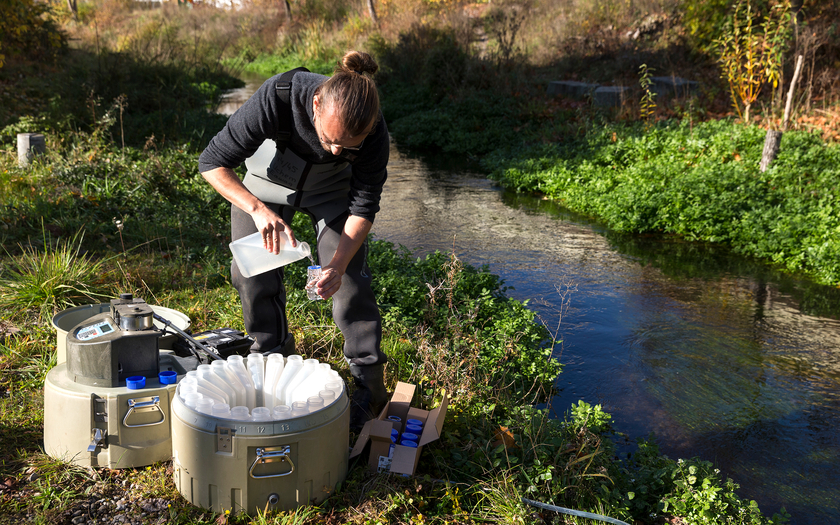News Detail
Pesticides in water bodies - there is still work to be done
July 9, 2024 |
With the Plant Protection Products Action Plan adopted in 2017, the Federal Council set targets to reduce the risks posed by plant protection products in watercourses. On 8 May 2024, the Federal Council gave a positive initial assessment. The study by the VSA and Eawag Water Quality Platform, which has now been published in the journal Aqua und Gas, analysed the impact of the action plan on watercourses based on measured pesticide concentrations for this interim assessment.
Water pollution still high
The effect of plant protection products is not limited to the targeted prevention of diseases or the killing of pests and weeds. In water bodies, they can damage plants, animals and microorganisms and thus reduce biodiversity. The objectives of the Plant Protection Products Action Plan therefore also require an assessment of the condition of water bodies based on the limit values of the Water Protection Ordinance. The latest analyses show that although the measures are effective, our streams and rivers are still heavily polluted with plant protection products: Ecotoxicological limits were exceeded at 22 of the 36 sites analysed (61%).
Halving target still a long way off
The number of sites at which all limit values are met hardly changed between 2019 and 2022. There was a slight improvement in the medium-sized and large watercourses in 2022. However, in the small and medium-sized streams with agriculture and settlements in the catchment area, limit values were exceeded at more than three quarters of the sites analysed. The Federal Council's report therefore assumes that without the development of new alternatives for the protection of crops, it will probably not be possible to halve the stretch of watercourse where limit values are exceeded by 2027. On the other hand, it is encouraging that there were significantly fewer locations with more than 10 limit value exceedances in 2022. An improvement trend is therefore visible, at least for the heavily polluted watercourses.
Focus on pyrethroids
Stefan Hasler, Director of the VSA, reads from the study that it makes sense to focus efforts on particularly toxic substances. These pose a particularly high risk to aquatic organisms. Pyrethroid insecticides are at the centre of this.
Cover picture: Drawing Anne Dietzel, Eawag.
Original publication
Expert report (in german only): Wirkung des Aktionsplans Pflanzenschutzmittel auf die Fliessgewässer (April 2024)


